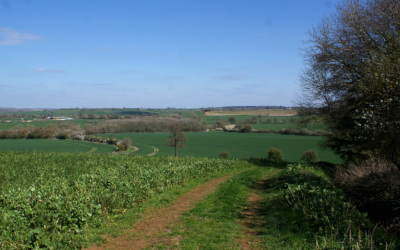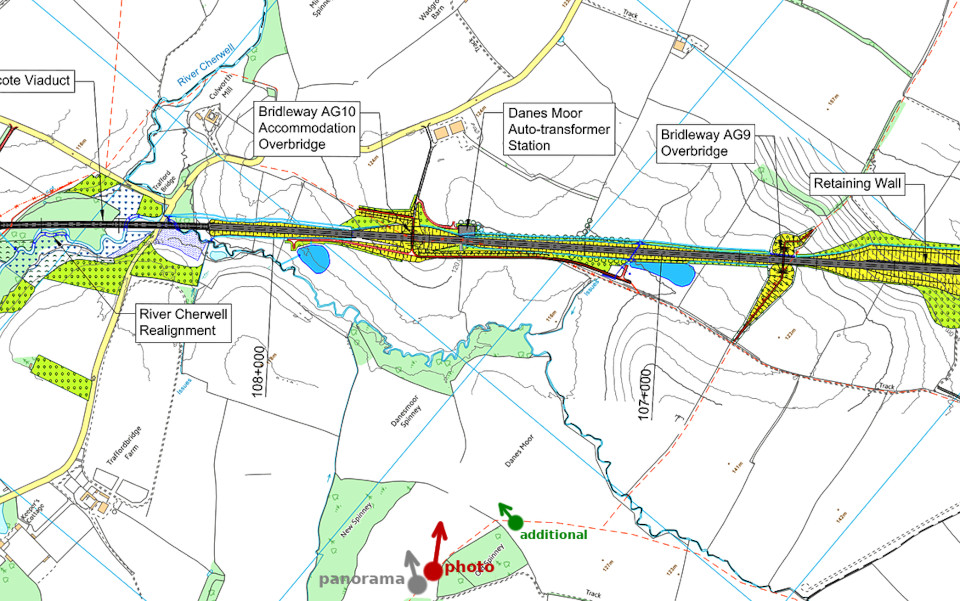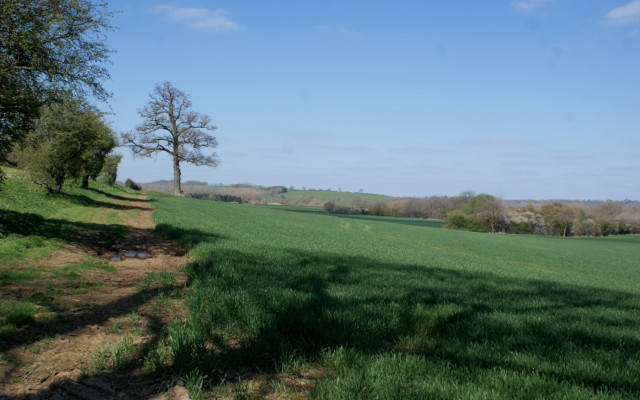
Banburyshire Rambles Photo-Journal
Paul Mobbs’ photographic record of his walks around ‘Banburyshire’ and ‘The Irondowns’, and occasionally, as part of his work around Britain, the areas beyond.
![]()

‘Last Chance (HS)To See’ index
View Ordnance Survey map for this site
View HS2 route map for this site
‘Last Chance (HS)To See’ – Scene 28:
‘Danesmoor from Edgcote Lodge’
Looking down on the ancient battlefield site from the top of Edgcote Hill, taking in the tranquil scene
11th April 2019
© 2018-2021 Paul Mobbs; released under the  Creative Commons license.
Creative Commons license.
Updated February 2021.
I’m taking in one of my favourite views on a bright sunny day, while it is still here. I’ve stood here in dry Summer and Winter snow; rain and sunshine; as a brief pause near the start of a walk from a nearby village, or at the apogee of a long 18 to 20 mile walk out from the town. It always seems to have something new to see.


In the scrub off to my right the sounds of Spring are bursting forth; I decide to record them to keep, alongside the photographs, as a record of the scene before HS2 arrives.
At the foot of this hill is the reputed site of The Battle of Edgcote Moor, on 26th July 1469; one of the key battles in the Wars of the Roses, when the Plantagenet kings and their historic connections to France were displaced by the more Anglicised House of York. Half a millennia before that, this valley was the site of the Battle of Danes Moor in 914, when the combined forces of the Saxon kingdoms of Wessex and Mercia pushed back the frontier of Danelaw.
Why should two battles have taken place here?
This was the crossing point for a number of significant Dark Age and Medival travelling routes; where the prehistoric north-east/south-west course of the Jurassic Way – an ancient ridge-route following the line of the Jurassic hills from Lincolnshire to Stonehenge – crossed the northwest-southeast course of the Medieval Welsh Lane – which connected the South East to the West Midlands and North Wales. And just over the top of the ridge beyond Culworth, the Medieval Portway crosses Banbury Lane

The new railway embankment doesn’t intrude directly onto the 1469 battlefield (pictured, right), but that’s not the point. The battlefield is only a historical curiosity. The issue here is that by raising the trackbed onto an embankment, the noise created by passing trains will spread out over a wider area, ending the relative serenity that can be found in this isolated valley.
Isolated from nearby main roads, this location was one of the few tranquil places to come and take in a view of the surrounding hills. From this point the railway will in line-of-sight for a long distance as it arcs from its cutting at Culworth to the ‘green tunnel’ at Chipping Warden. HS2 will end that tranquillity because the noise of the passing trains will be audible for a far longer period (assuming the top line speed of 225mpg, just under one minute).
Panorama over Danes Moor from Edgcote Lodge
Use the slider to move the view from side to side
Load map of this location.
